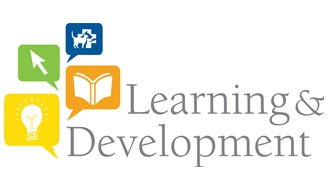Although structures are said to hamper innovation, it is still very important to design a structured learning intervention with an unconventional approach.
It was 4 PM and I was desperately waiting for my evening snacks, after an early lunch. With each passing minute the power point slides and other accompanying activities were all becoming difficult to follow/practise. Finally, I could kill some time with the snacks and yet passed the last hour of the session browsing WhatsApp.
This is the story of most participants attending formal training programmes organised by the HR department, to help the employees ‘enhance’ their capabilities. Many a times, these training programmes just end up becoming a ritual and a mere figure in an excel sheet to be presented at the end of the year in terms of training man-days.
In the midst of organising these rituals, as HR professionals, we often tend to overlook the substance and impact of these training interventions. Today, in this dynamic environment, when many tools and technologies have fundamentally changed the way we think, it’s time we overhaul our Learning & Development interventions too. Only then can we create a learning organisation and provide holistic growth to the employees. To do this, we need to deliver the conventional wisdom unconventionally, which means that the HR professionals will need to tweak the PLP approach.
PLP: Though it is often said that structures hamper innovation, it is still very important to design a structured learning intervention, involving Prework, Learning Delivery and Post- Learning support.
Prework: This is one of the most overlooked categories. Prework involves capturing the expectations of the employee and also creating an awareness about the learning intervention. Often, it happens that some very well-designed learning interventions are not able to capture the attention of the employees. HR professionals need to think beyond regular mailers and excite employees by creating curiosity about the learning intervention.
Clubbing learning interventions with important events like elections, Olympics, big-ticket movie releases and festivals will draw the attention of the employees and also sustain it. Often prework consists of interviews and surveys, which are done at the last moment, killing the entire objective of prework. Instead, other techniques, such as selfies, arts, skits and stories should be used to engage the participants in prework. For instance, the present presidential elections in the US offer a great opportunity to drive an intervention around diversity at the workplace. Following the campaign can be a good prework, which doesn’t require much effort.

Learning intervention: With the workforce becoming more expressive and attention spans reducing along with 24 hours connectivity, it becomes imperative for HR professionals to move beyond classroom instruction techniques, which have outlived their utility. Instructor-led training often does not get a good response because each individual will have a different need, which clearly points towards the need for techniques that can decentralise learning. Methods involving cross-functional stint, job-shadowing, movies, coaching, sports and even travelling, which can be tailored according to the need of the individual may prove useful. Today, we have technology, such as augmented reality and simulation to create learning interventions, which will cater to individual needs. Every employee is different, and hence, their learning methodology will also be different. It becomes important for HR professionals to understand this and make use of different techniques to facilitate this learning.
Post-learning: Often, a learning intervention ends with its delivery. This is one of the biggest mistakes organisations commit. It is important to provide an opportunity to employees to demonstrate what they have learnt and HR must encourage the line managers to take up this part. Line managers need to be equipped with proper skills to encourage the employee to demonstrate their learning in their jobs. Only when line managers take up this responsibility will a learning intervention deliver the desired results.
At a time when talent has become highly mobile, it becomes very important for organisations to not only develop meaningful and customised learning interventions but also to market them well among the employees. The traditional PLP approach, with innovative techniques at different stages shall help organisations become learning organisations in the true sense.
(The author is manager – production, Asian Paints).




1 Comment
Nice article! I really appreciate what you mentioned about creating that curiosity among people with respect upcoming intervention! The challenge we generally face in organization is that training is looked at as an opportunity to stay in a fancy hotel, fancy location and as a break from work which totally defies the purpose of the intervention.
As HR we need to innovate our methods and making interventions more live.